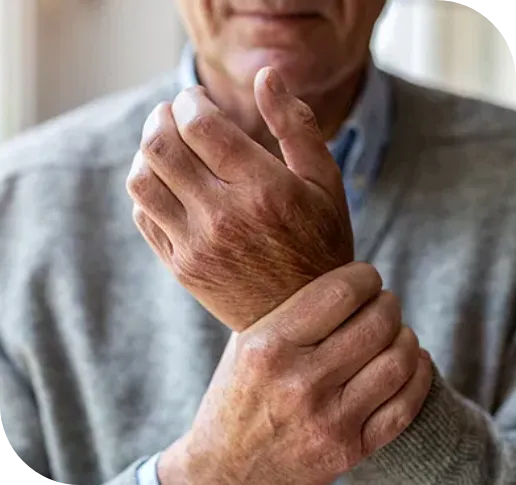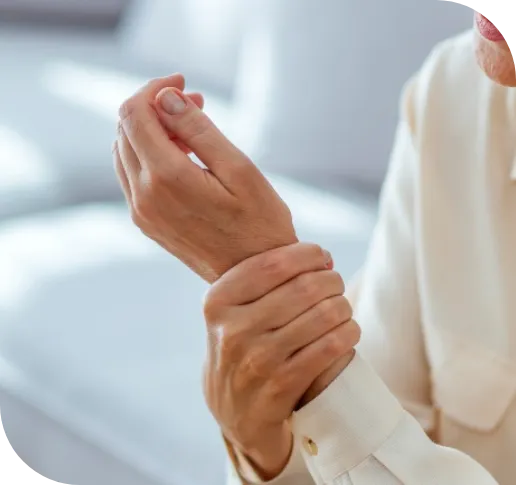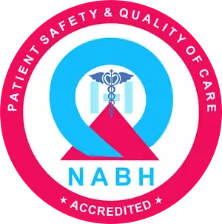Rheumatoid arthritis (RA), commonly known as arthritis, is an autoimmune illness resulting in chronic joint inflammation.It can also cause inflammation in the tissue around joints and other body organs, which is known as osteoarthritis. Autoimmune disorders are illnesses caused by the body’s immune system mistakenly attacking its tissues. The immune system is a complicated system of cells and antibodies meant to seek out and remove foreign intruders in the body, especially infections. Antibodies in the blood of patients with autoimmune illnesses attack their body tissues, where they can cause inflammation. It is frequently referred to as rheumatoid disease since it can affect various body organs, including the heart and kidneys. The Ayurveda Treatment for arthritis in Kerala is well known for its success rates. It is the best choice to treat a patient with arthritis. While rheumatoid arthritis is a chronic disease that can endure for years, people may go for long periods without experiencing symptoms. Rheumatoid arthritis, on the other hand, is typically a chronic disorder that can lead to joint deterioration and functional impairment.


Rheumatoid arthritis usually inflames many joints in a symmetrical pattern. Mild joint soreness, stiffness, and fatigue are the most common early signs and symptoms. The wrists, fingers, knees, feet, and ankles are usually affected.
No test can conclusively determine whether or not you have RA. Most RA patients will have some aberrant test findings; however, others will have normal results on all tests.
It is the condition that occurs when the bone and cartilages undergo wear and tear. The causes of this condition involve bone spurs, dehydrated spinal disk, herniated disks, injury, etc. The risk factors include neck injuries, work-related activities, holding the neck in an uncomfortable position for longer periods, genetics, smoking, etc. The pain might increase while standing, sitting, sneezing, coughing, etc.
Blood count
Joint x-rays
Erythrocyte sedimentation rate
Synovial fluid analysis
C-reactive protein
Test for rheumatoid factor
The antibody test for CCP
If rheumatoid arthritis worsens, it becomes the most difficult disease to treat in comparison to others. Hands, feet, ankles, elbow joints, and the low back, knee, and hip joints become inflamed and uncomfortable. The agony in the damaged joints is similar to the sting of a scorpion.” Thousands of years ago, Ayurveda provided a detailed account of the causative factors, pathophysiology, symptoms, therapeutic concepts, and diet and lifestyle adjustments for treating ‘Amavata.’
Early-onset disease with a dominant dosha in a young person can be treated with correct therapy and religious adherence to the dos and don’ts. When a condition becomes chronic, it affects several systems, incurable. If there are indicators of difficulties, it could pose a major threat to one’s life.
Langhanam is called (fasting).
Sodhana chikitsa is also known as the purification of the body.
Shamana chikitsa is known as the treatment for subsiding the symptoms.
Langhana (fasting) -This process is completed by either not eating food or giving green gram/rice/barley soups
Shodhana – Panchakarma therapy is used to accomplish this. Treatment is frequently lengthy, and several operations are carried out based on the patient’s health and attractiveness. Snehapanam, Vamanam, Manal kizhi, Virechanam, Podikizhi, Elakkizhi, Pizhichil, Vaitharana / Kshara Basti, Navarakizhi, and other therapies are employed to obtain the optimum results.
Shaman Chikitsa is accomplished by using very effective and time-tested Ayurvedic medicines such as kashaya and asavarista. Choorna, vati, taila, rasoushadi are included in the preparation.
The three doshas of Ayurveda are Vata (air), Pitta (fire), and Kapha (water) (water and earth). A dosha is a fundamental element, or energy, in the human body. Dietary recommendations for people with RA are comparable to those for those with amavata, an ayurvedic illness. Amavata is a joint illness that has symptoms that are similar to RA. Ayurveda suggests a diet that pacifies or balances Vata for amavata.
Lentils, dal, mung beans, miso, and tofu grains are examples of legumes. legumes: lentils, dal, mung beans, miso, and tofued grains: cooked oats, rice, and cream of wheat legumes: lentils, dal, mung beans, miso, and tofu.
To aid digestion and remove toxins, drink lukewarm water or water boiled with ginger root.
Vegetables that are green and leafy
Ginger, turmeric, and garlic are anti-inflammatory spices that help with digestion.
Buttermilk
Mild amounts of wild animal meat, old wine
Turmeric’s active element is curcumin. It helps to decrease cartilage damage by inhibiting the molecules that produce inflammation. It may provide relief by decreasing the body’s pain signals. Curcumin may decrease the course of osteoarthritis and relieve pain, according to 2016 animal research.
Ayurvedic medications and Panchakarma determined that they could cure or control RA without causing adverse effects. In contrast, non-steroidal anti-inflammatory pharmaceuticals and disease-modifying anti-rheumatic drugs induce side effects during treatment.
Ashwagandha may act as a pain reliever by preventing pain signals from being sent through the central nervous system. It’s also possible that it has anti-inflammatory qualities. As a result, some studies have found it useful in treating rheumatoid arthritis and other types of arthritis.


There is nothing ayurveda couldn’t offer you. From minor disease treatments to entire body rejuvenation, ayurveda has everything in it to keep your wellbeing.
Sreerudra Ayurveda Multi-Speciality
Hospital, Kaithavana,
Alappuzha — 688003
info@sreerudraayurveda.com
+91 477 2266778
+91 98479 48218
© 2024 All Rights Reserved by Sreerudra Ayurveda. Made With Passion By MarketBytes WebWorks Pvt Ltd.